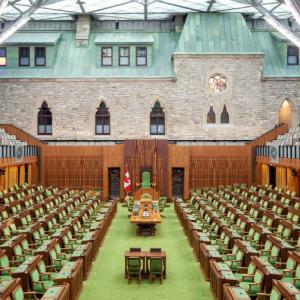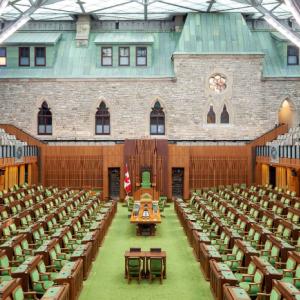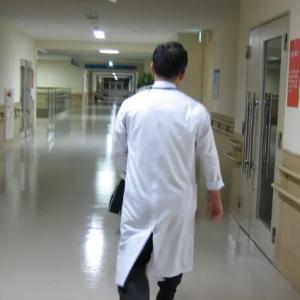Report reveals ‘alarming trend’ of private staffing agencies in Ontario hospitals

Growth in government funding on Ontario’s public hospital systems has been significantly outpaced by spending on private health companies, according to a recent report by the Canadian Centre for Policy Alternatives.
Between 2013 and 2023, real per capita spending on private staffing agencies in Ontario nearly doubled (98 per cent) while spending on hospitals increased by only 6 per cent.
“It’s been increasingly difficult to recruit and retain staff in hospitals,” Hollowed Out report author Andrew Longhurst told Healthy Debate. “You have a number of different actions by the provincial government that really created a hospital funding crisis and that triggered a workforce crisis.”
Longhurst says that trouble with funding has forced hospitals to rely on private staffing agencies to keep services open, adding that Ontario is one of the most under-capacity hospital systems in the industrialized world. “Layer on top of that the pandemic and you’ve really created the perfect storm of all of these pressures.”
According to the report, Ontario ranked 33 out of 38 Organization for Economic Co-operation and Development (OECD) countries on staffed hospital beds per capita and had among the fewest hospital beds per capita in Canada in 2022-2023.
Ontario public hospitals paid private, for-profit agencies $9.2 billion for services over 10 years. While the number of private agency staff worked in hospitals accounted for just 0.4 per cent of hours, private agencies accounted for six per cent of the province’s labour costs.
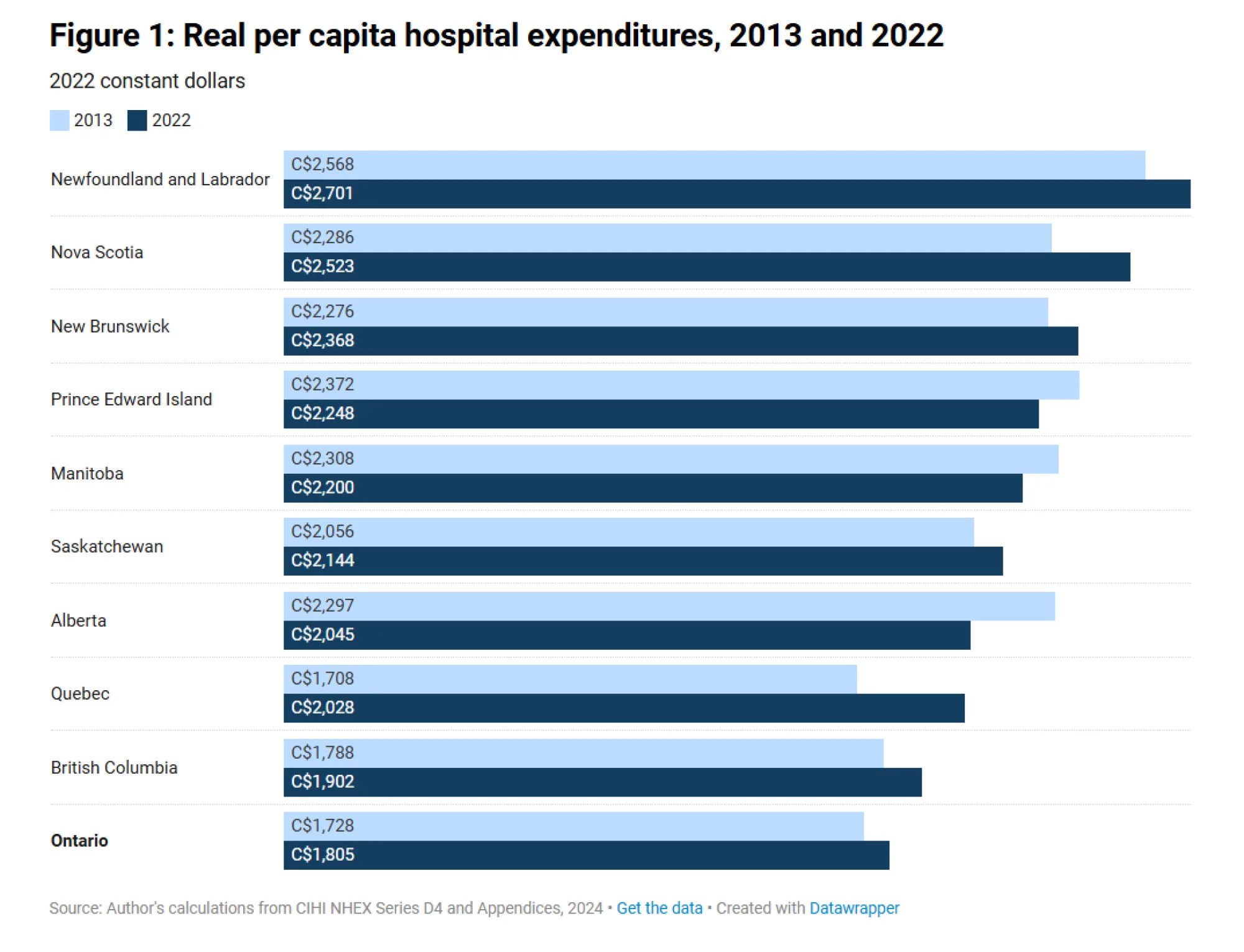
Private staffing clinics at the expense of public workers
The report flags that “the use of private, for-profit staffing agencies is a financial drain on publicly funded health-care organizations. The cost to public hospitals can be more than three times the cost of hiring regular employed staff.”
It adds that “the use of agency staffing perpetuates a vicious cycle that hollows out the public sector workforce.”
Ontario’s attempt to legislate a one per cent cap on annual wage increase for provincial public sector employees, Bill 124, which was later ruled unconstitutional, contributed to the increase in for-profit staffing agencies, the Hollowed Out report notes, stating that as the number of vacancies jumped from 2015 to 2023, “due to wage suppression and growing workloads, so too did hospital spending on private agencies.”
A 2023 Auditor General of Ontario noted “multiple reasons for high turnover at emergency departments, especially among nurses. Factors included the higher pay and flexibility offered by private staffing agencies, as well as the introduction … of Bill 124.”
Smaller, rural and northern hospitals with revenue under $100 million have been the most impacted by the staffing crisis. From 2013 to 2023, agency staff spending as a share of total frontline labour costs in northwestern Ontario increased from 3.7 per cent to 17 per cent.
The Auditor General to address staffing shortages, “hospitals have been in-part relying on nurses from agencies “at significantly higher rates than permanent nurses,” and that “one hospital spent about $8 million on agency nurses in the emergency department, more than triple the $2.4 million spent” the previous year.
Longhurst adds that “hospitals have been really pressured by the provincial government to seek out the most expensive form of labour to [stay open] … private agencies are making out like bandits in terms of the rates that they charge hospitals.”
Growing trend of increased privatization
Longhurst says that Ontario’s limited increases to hospital funding and the staffing crisis are undeniably linked.
In 2022, Ontario had the lowest real per capita hospital expenditure in the country at $1,805. That year, spending accounted for just 2.6 per cent of provincial GDP, down from 2.8 per cent in 2013.
In February 2023, the Ontario government committed to improve access to home, community and hospital care, stating that 3,000 new hospital beds would be opened by 2032.
However, Hollowed Out notes that the government is simultaneously investing in areas that may undermine the public system. In May 2023, the government passed Bill 60 to encourage the growth of private facilities to perform publicly funded surgical and diagnostic procedures outsourced from public hospitals.
Though the Ford government has claimed that the use of for-profit organizations such as private surgical clinics would help reduce the wait times and increase system efficiency, a CBC investigation found one investor-owned facility was paid two to three times more than public hospitals to perform the same procedure.
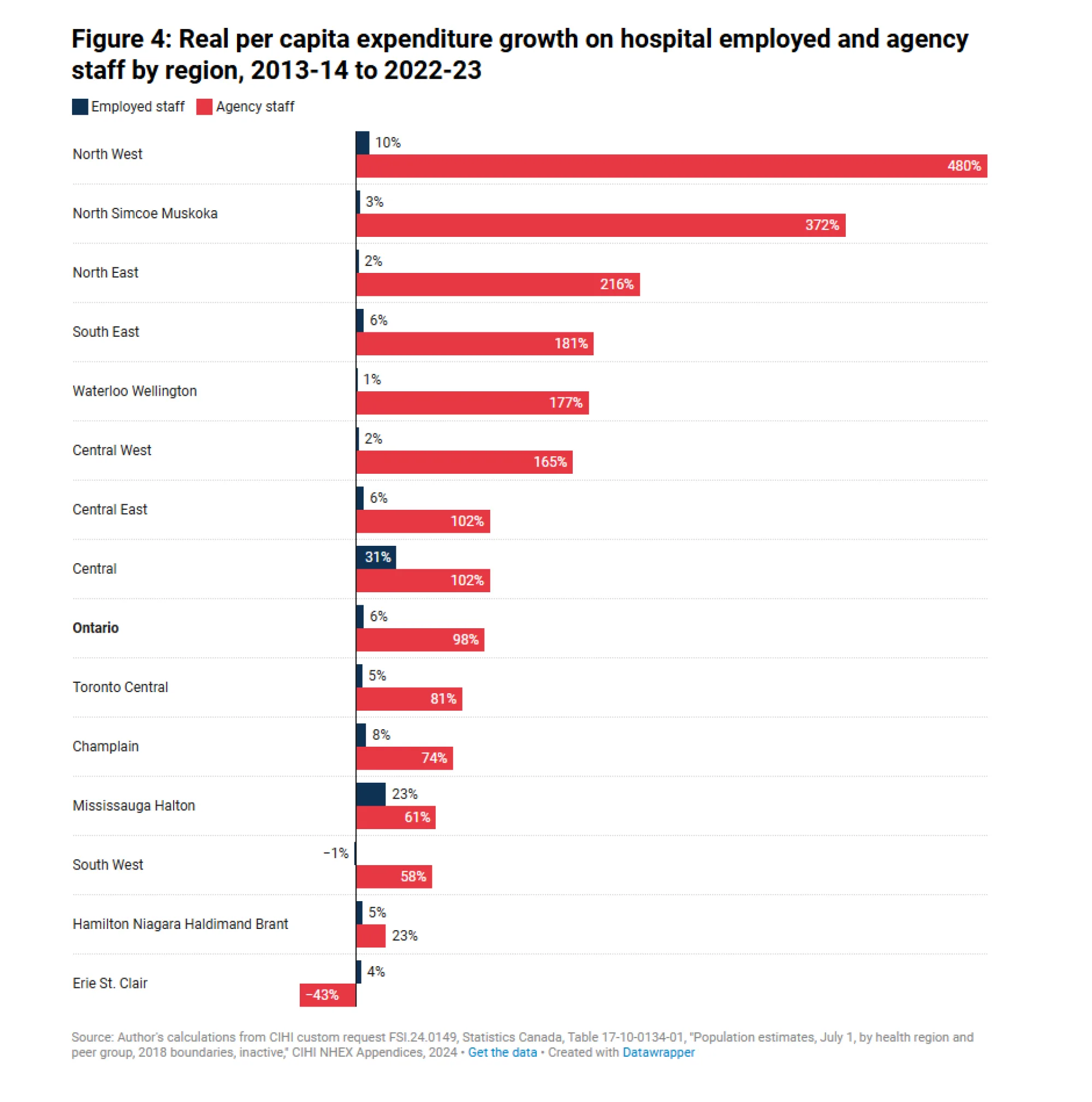
Where do we go from here?
The Hollowed Out report highlights several key areas to address the growing issues of overburdened hospitals and the staffing crisis, including investing in primary care supports (particularly those for people of lower income), increasing funding for senior care and reducing disease burden by implementing public health approaches, like setting indoor air quality standards to mitigate the spread of airborne illnesses.
“We need to immediately stabilize hospital finances … and from there increase hospital capacity,” Longhurst says, noting that estimates show Ontario’s hospital system will need about $2 billion in additional funding annually just to maintain services levels.
The report also recommends that Ontario increase transparency around spending on private staffing agencies, gradually phasing them out with the aim of replacing them with public sector alternatives.
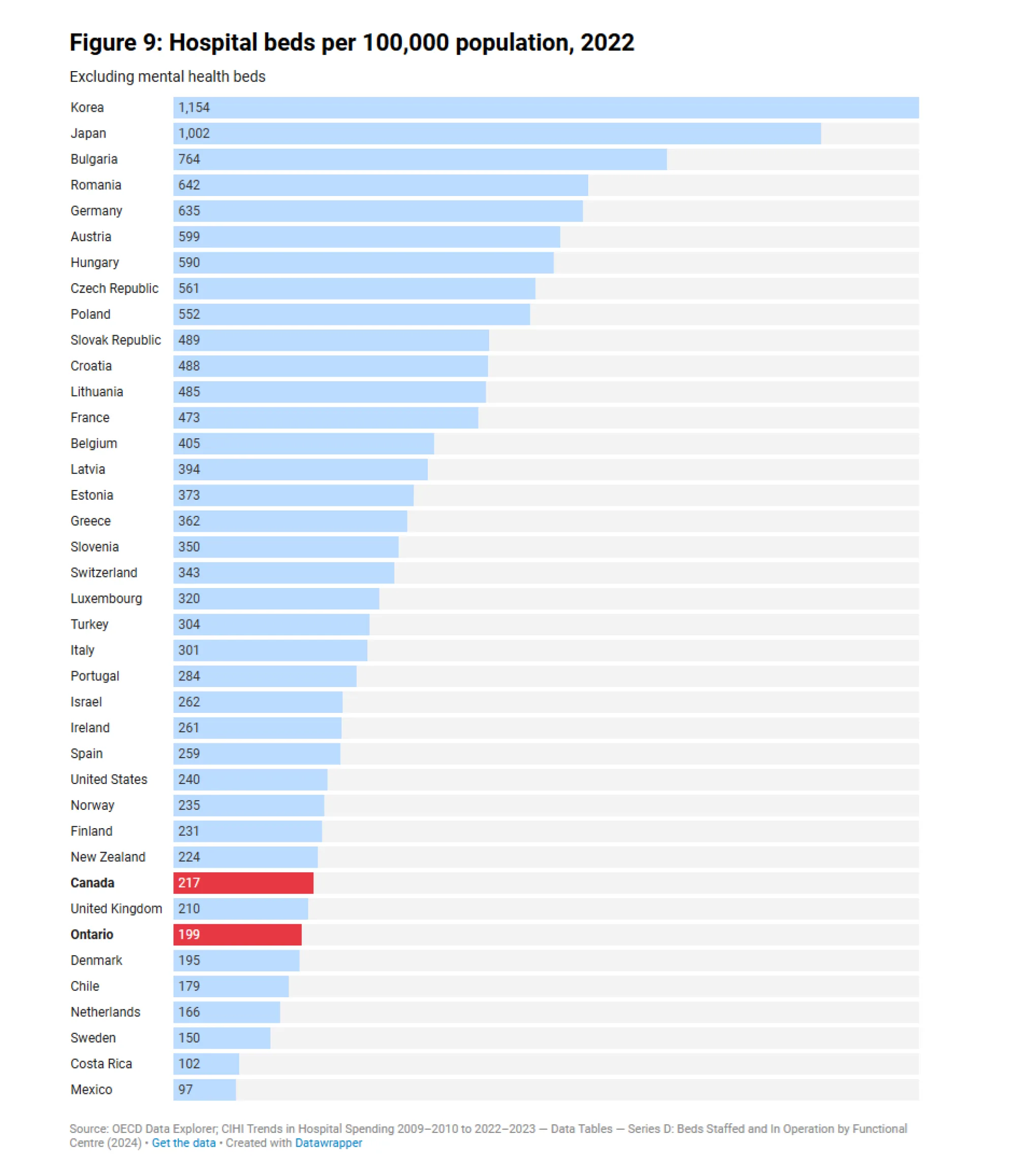
Many governments across Canada have already moved to end the practice of using private agencies for hospital staffing. Quebec introduced legislation in 2023 to phase out health-care staffing agencies by 2026. B.C plans to establish a public sector alternative to for-profit agencies.
In December 2024, Ontario introduced legislation that would require agencies to disclose their rates to government but did not commit to phasing out their use in publicly funded health care.
“The private agency model is not intended to solve [the problem of the workforce crisis]. In fact, it’s making it worse and that’s what we’re seeing,” says Longhurst. “It’s a nasty disease where the more you entrench and depend on private agencies to staff your hospitals, the more you hollow out that same workforce that’s no longer available to pick up or accept permanent employment, all at a very significant cost to taxpayers.”
All graphs from Hollowed Out report with permission.


